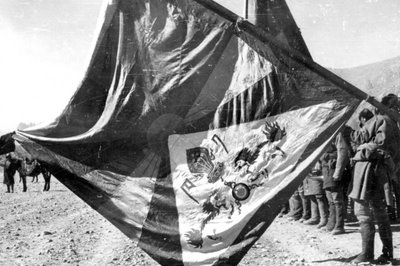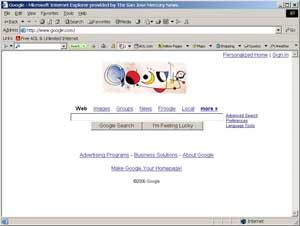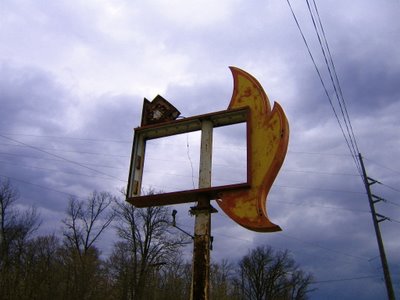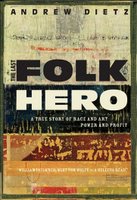
"Black vernacular art," says Bill Arnett in his inimitably exaggerated style, "is the most important cultural phenomenon of our time. This is like the Italian Renaissance in its scope, breadth, and depth. It's just that the people are the wrong color."
This quote from Andrew Dietz's book
The Last Folk Hero begins to capture both the audacity and passion of Arnett, one of contemporary folk art's biggest benefactors and, according to some, its greatest villain. Accused of exploiting self-taught artists like
Lonnie Holley,
Thornton Dial, and the famed quilters at
Gee's Bend through exclusive sales deals, Arnett is also arguably the top promoter of these artists. But after finishing Dietz's book, I'm still unsure who the last folk hero is. Arnett? At times he's presented as an unlikable and pompous boob, as Dietz chronicles him unheroically compiling enemies' lists, stepping on the toes of those in southern museums who can help his cause, and waxing paranoiac about those who are out to get him. At others, he's a charming, impassioned guy with genuine concern for these under-recognized artists.
More likely, the heroes are the artists who use housepaint or wire, tree roots or scraps of fabric to create works of art every bit as powerful as those of their schooled contemporaries: Former Whitney director Max Anderson says, "Lonnie Holley and Thornton Dial are the equals of any artists in the United States," and
The New York Times' Michael Kimmelman called the Gee's Bend quilts "
some of the most miraculous works of modern art America has produced. Imagine Matisse and Klee (if you think I'm wildly exaggerating, see the show) arising not from rarefied Europe, but from the caramel soil of the rural South in the form of women, descendants of slaves when Gee's Bend was a plantation." (Compare Linda Pettway's quilt, below, with Hans Arp's 1916-17 collage
Untitled (Collage with Squares Arranged According to the Laws of Chance) and you start to see where Kimmelman's coming from.)

From these tenaciously unconventional artists to Arnett's testy clashes with southern collectors to Dietz's own experiences,
The Last Folk Hero is truly an "outsider" journey. At one point Dietz quotes Peter Marzio, longtime director of the
Museum of Fine Arts, Houston, who revealed that even on an institutional level, this art is far from accepted. Disappointed that no museums signed on early to tour the quilt show, he said:
The other museum directors just didn't think it was art. This kind of art is threatening to the academy, the traditional art infrastructure. It throws up to them that the creative world can take many routes--outside of the main channels they control. The people of my generation, who were so antiestablishment, are more reactive and defensive culturally now than the nineteenth-century academy was to the advent of modern art.
As I've written before, self-taught and "outsider" art offers us not only an alternative to the fickle machinations and trends of the art world, but also to mainstream consumer culture, where creative autonomy is often packaged as
hip consumption--our creativity is demonstrated by our buying choices instead of how true we are to our own visions. These artists, in their eccentric and unswerving dedication to their own expressions, offer a compelling model of true American independence.
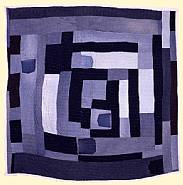
Maybe that's why I'm writing so much about
The Last Folk Hero. Dietz's project has that kind of autonomous spirit. Written in spare time while running a business and raising two children, he ended up self-publishing the book. He founded Ellis Lane Press, a moniker that combines his daughters' middle names, "to remind them that we cannot wait to be annointed as valid or creative by unseen, random others but rather we need to take the responsibility to validate ourselves and put something positive into this world."
But there's another reason: no one would publish the book.
"I completely lost patience with the big publishers who all said the same thing about the early proposal: 'We love the story; great characters; terrific writing; WE would love to read the book...but...we don't publish books about art because they don't sell,'" he wrote in an email. "Well, I thought that was like saying that
Midnight in the Garden of Good and Evil was just a story about antiques in Savannah or
Seabiscuit was just about some horses."
Summing it all up, then, is a great quote by George Bernard Shaw that Dietz uses in the book. It's as fitting for Pettway or Dial, Arnett or Dietz, or, hell, any of us who have a vision. Writes Dietz:
"All progress is the result of the unreasonable man." Of course, when I asked Bill Arnett what he thought about that he answered, "Shaw wasn't talking about ME, I never met the man!"
Artwork (top to bottom): Thornton Dial's Ground Zero: Nighttime All Over the World (2002); Linda Pettway's Blocks and Strips, 2003
 War, terrorism, corruption at the highest levels of government, global warming: with so much weighing heavy on our souls, some Christians are urging us to pray.
War, terrorism, corruption at the highest levels of government, global warming: with so much weighing heavy on our souls, some Christians are urging us to pray.



